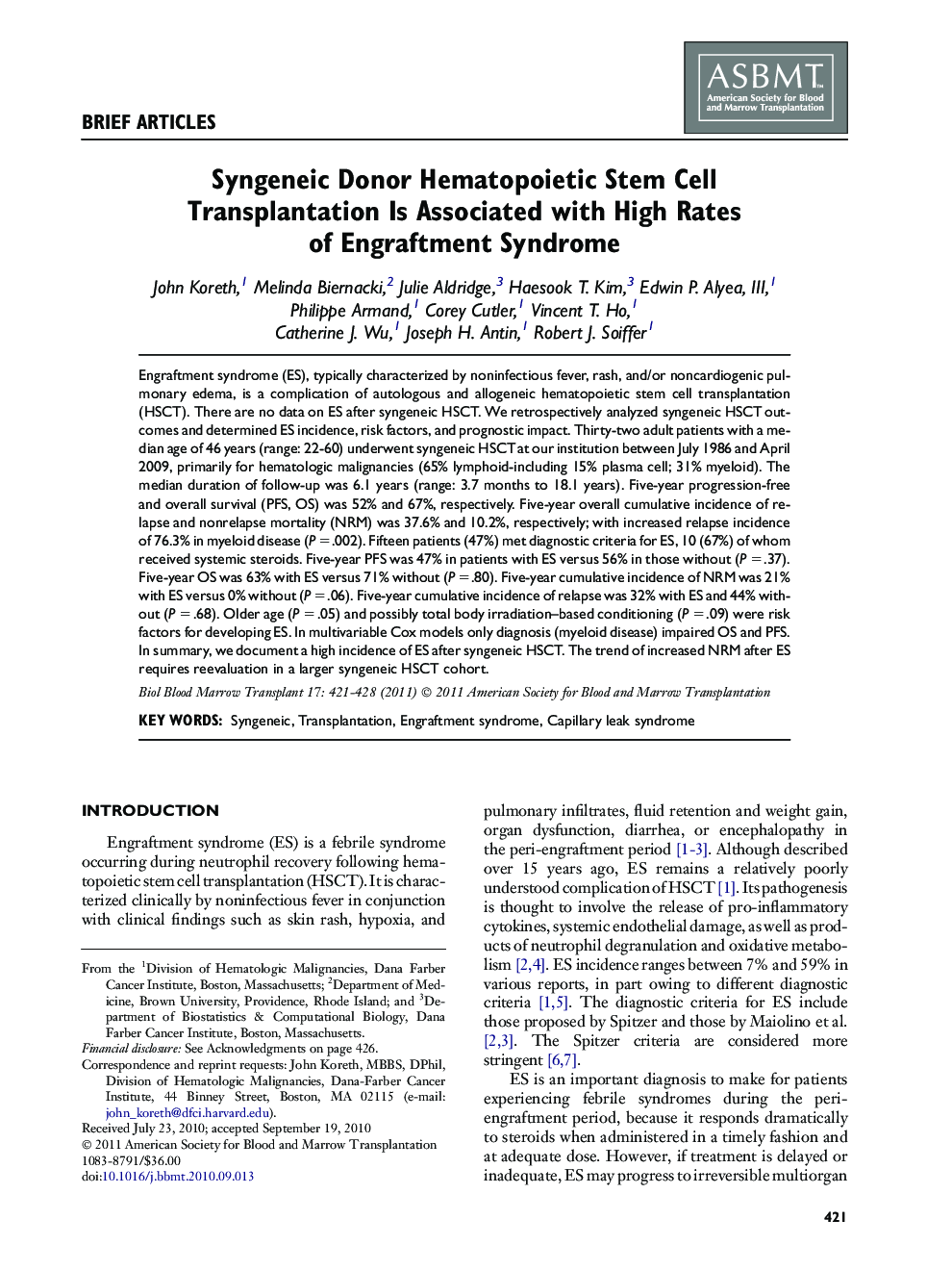| کد مقاله | کد نشریه | سال انتشار | مقاله انگلیسی | نسخه تمام متن |
|---|---|---|---|---|
| 2103573 | 1546323 | 2011 | 8 صفحه PDF | دانلود رایگان |

Engraftment syndrome (ES), typically characterized by noninfectious fever, rash, and/or noncardiogenic pulmonary edema, is a complication of autologous and allogeneic hematopoietic stem cell transplantation (HSCT). There are no data on ES after syngeneic HSCT. We retrospectively analyzed syngeneic HSCT outcomes and determined ES incidence, risk factors, and prognostic impact. Thirty-two adult patients with a median age of 46 years (range: 22-60) underwent syngeneic HSCT at our institution between July 1986 and April 2009, primarily for hematologic malignancies (65% lymphoid-including 15% plasma cell; 31% myeloid). The median duration of follow-up was 6.1 years (range: 3.7 months to 18.1 years). Five-year progression-free and overall survival (PFS, OS) was 52% and 67%, respectively. Five-year overall cumulative incidence of relapse and nonrelapse mortality (NRM) was 37.6% and 10.2%, respectively; with increased relapse incidence of 76.3% in myeloid disease (P = .002). Fifteen patients (47%) met diagnostic criteria for ES, 10 (67%) of whom received systemic steroids. Five-year PFS was 47% in patients with ES versus 56% in those without (P = .37). Five-year OS was 63% with ES versus 71% without (P = .80). Five-year cumulative incidence of NRM was 21% with ES versus 0% without (P = .06). Five-year cumulative incidence of relapse was 32% with ES and 44% without (P = .68). Older age (P = .05) and possibly total body irradiation–based conditioning (P = .09) were risk factors for developing ES. In multivariable Cox models only diagnosis (myeloid disease) impaired OS and PFS. In summary, we document a high incidence of ES after syngeneic HSCT. The trend of increased NRM after ES requires reevaluation in a larger syngeneic HSCT cohort.
Journal: - Volume 17, Issue 3, March 2011, Pages 421–428